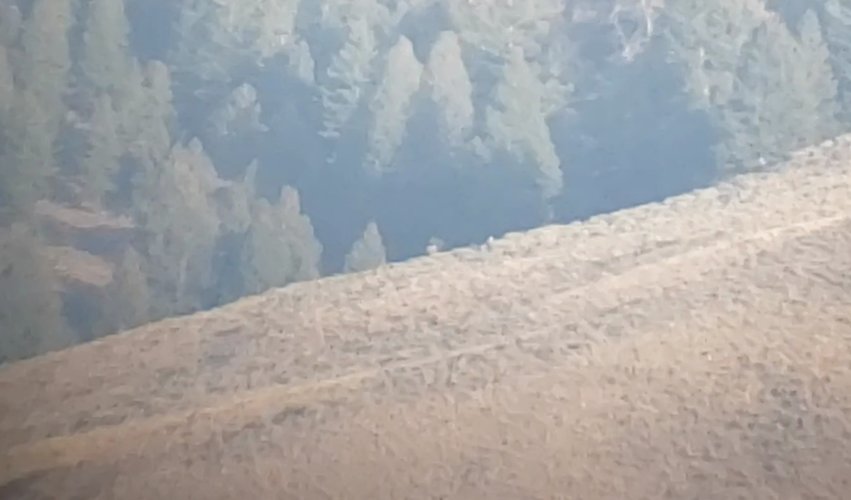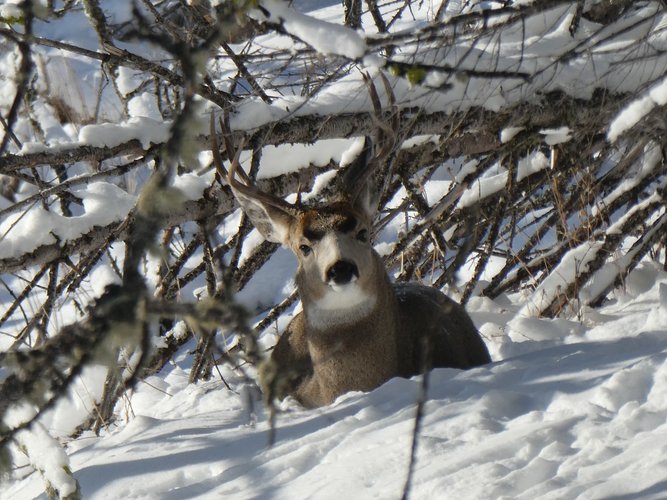Our experiences hunting mule deer so far reveal a shortcoming, finding mule deer in their beds. Can it be done? We've tried, and failed, but maybe we just don't know what the heck we're doing. Our optics aren't high end but we still should be able to see parts, pieces, or whole deer 4-5 hundred yards out, shouldn't we? OTOH, the lack of info found on the subject may mean it's just not a realistic possibility.
Navigation
Install the app
How to install the app on iOS
Follow along with the video below to see how to install our site as a web app on your home screen.
Note: This feature may not be available in some browsers.
More options
You are using an out of date browser. It may not display this or other websites correctly.
You should upgrade or use an alternative browser.
You should upgrade or use an alternative browser.
Bedded Mule Deer
- Thread starter fmnjr
- Start date
RidgeRoamingRichard
Well-known member
Depends on where you are. Its easy in some places.Our experiences hunting mule deer so far reveal a shortcoming, finding mule deer in their beds. Can it be done? We've tried, and failed, but maybe we just don't know what the heck we're doing. Our optics aren't high end but we still should be able to see parts, pieces, or whole deer 4-5 hundred yards out, shouldn't we? OTOH, the lack of info found on the subject may mean it's just not a realistic possibility.
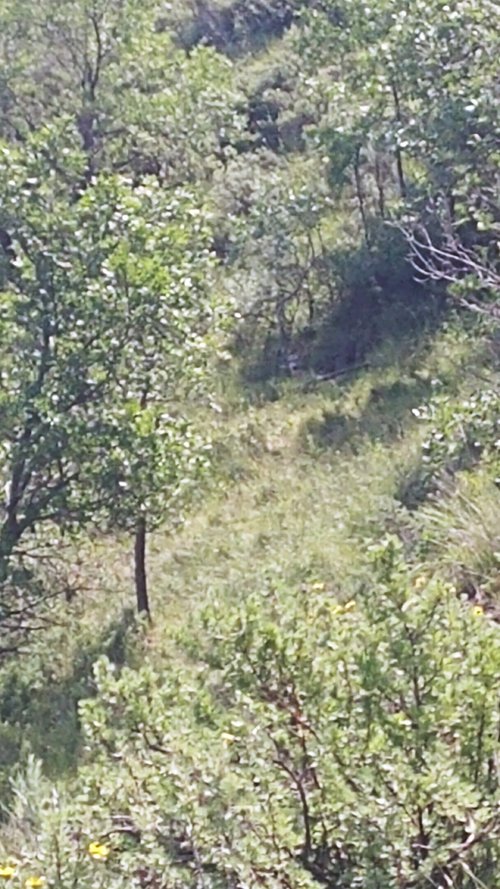
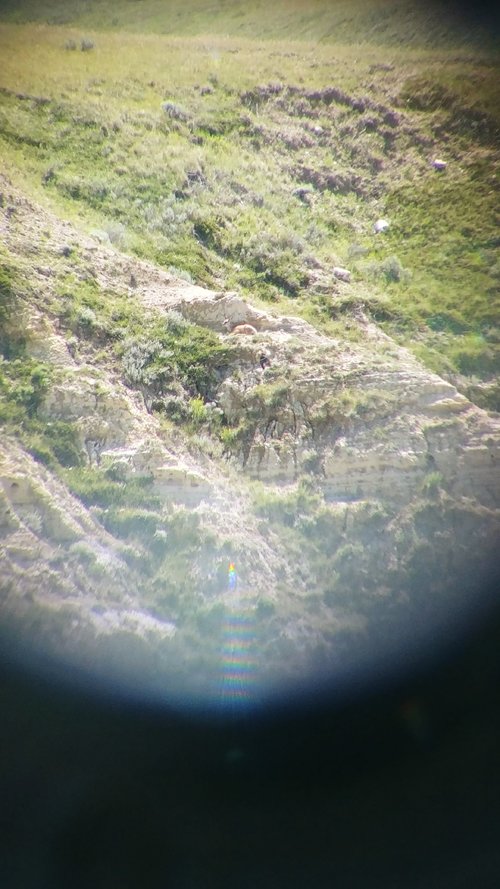
Hunting Wife
Well-known member
Depends on habitat type. Where I typically hunt, I would consider 400-500 yards to be relatively close. I routinely find them much farther than that. This would be in sage, grass, juniper, and ponderosa type stuff with cottonwood and buffaloberry draws. Similar looking to the pics above in many places.
Do you find them already in their beds over those distances? That’s what I’m trying to figure out, how can I find them before they’ve moved.Depends on habitat type. Where I typically hunt, I would consider 400-500 yards to be relatively close. I routinely find them much farther than that. This would be in sage, grass, juniper, and ponderosa type stuff with cottonwood and buffaloberry draws. Similar looking to the pics above in many places.
Look for them mid morning.
Cold weather they may be bedded in the sun, base of a big rock or tree. Warmer weather we find them to go over a ridge to bed in shade.
We hunt bedded mule deer almost every year, first look for them up and feeding then follow them to their bed or pull out the spotting scope and pick over likely spots.
We use the spotter to find from a mile away sometimes.
Here's a bedded buck spouse took last fall. We had seen him up and feeding earlier and spotted him bedded mid morning.
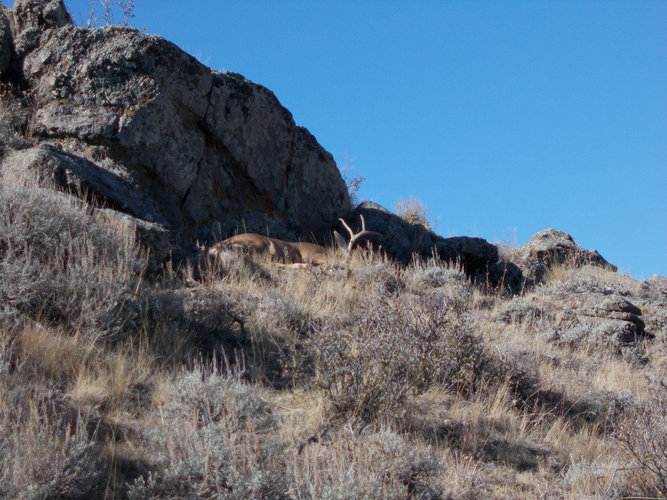
Cold weather they may be bedded in the sun, base of a big rock or tree. Warmer weather we find them to go over a ridge to bed in shade.
We hunt bedded mule deer almost every year, first look for them up and feeding then follow them to their bed or pull out the spotting scope and pick over likely spots.
We use the spotter to find from a mile away sometimes.
Here's a bedded buck spouse took last fall. We had seen him up and feeding earlier and spotted him bedded mid morning.

Hunting Wife
Well-known member
Do you find them already in their beds over those distances? That’s what I’m trying to figure out, how can I find them before they’ve moved.
Yes. Once your brain acquires a search image, it can be stupidly easy. The “Y” of neck and ears, the horizontal line of a back, nose and ear profiles. Then there are the harder pieces... sticks that turn into antlers, funny colored patches that turn into markings, weird looking rocks that start flicking their ears. Glass enough, and you’ll start to pick out the obvious ones, as well as the weird looking spots that just make your deer sense go off, even though you still might have to stare at it for a bit until your brain can actually recognize the deer
But part of it is knowing where to look. If it’s cold, look at sunny spots out of the wind. If it’s hot, look at shady spots, etc. And sometimes just a small shift in location will change your perspective just enough to pick something out in stuff you already glassed.
rtraverdavis
Well-known member
Are you using your binoculars on a tripod? Amazing what perfectly-still glass will allow you to see that you wouldn’t while free-handing.
Elkmagnet
Well-known member
My biggest challenge is I really have to spend lots of time looking into the shadows. Force yourself to find details in the dark spots.. Its hard, its not fun, but if you concentrate it can be done.
Good glass does help with this.
Good glass does help with this.
TrumpkinTheDwarf
Well-known member
Getting lots of practice when deer are abundant and easy to see (aka, summer) will help you start to key in on spots they like to bed, as well as learning what size object to expect at a given distance. I've found my eyes take some calibrating to get in the habit of finding deer in their beds.
Yes, but not enough apparently. I need to upgrade my glass as well.Are you using your binoculars on a tripod? Amazing what perfectly-still glass will allow you to see that you wouldn’t while free-handing.
My biggest challenge is I really have to spend lots of time looking into the shadows. Force yourself to find details in the dark spots.. Its hard, its not fun, but if you concentrate it can be done.
Good glass does help with this.
I've been thinking about these types of activities and trying to do them more.
Are you using your binoculars on a tripod? Amazing what perfectly-still glass will allow you to see that you wouldn’t while free-handing.
At times I have. Going to upgrade my glass and tripod, too.
Look for them mid morning.
Cold weather they may be bedded in the sun, base of a big rock or tree. Warmer weather we find them to go over a ridge to bed in shade.
We hunt bedded mule deer almost every year, first look for them up and feeding then follow them to their bed or pull out the spotting scope and pick over likely spots.
We use the spotter to find from a mile away sometimes.
Here's a bedded buck spouse took last fall. We had seen him up and feeding earlier and spotted him bedded mid morning.
View attachment 158673
What type of glass are you using for mile-away spotting?
Swaro ATX 20-60x spotter or a Leupold GR 12-40x. Either lets you see if he's worth a closer look at that distance. I do not carry a smart phone when hunting, but a phone scope with on a decent spotter would get you a great look too.
Lots of great spotting scopes out now too, good glass with fair pricing, cue schmalts.
Lots of great spotting scopes out now too, good glass with fair pricing, cue schmalts.
Straight Arrow
Well-known member
Swaro ATX 20-60x spotter or a Leupold GR 12-40x. Either lets you see if he's worth a closer look at that distance. I do not carry a smart phone when hunting, but a phone scope with on a decent spotter would get you a great look too.
Lots of great spotting scopes out now too, good glass with fair pricing, cue schmalts.
I've been talking to him about some Meostars and am considering the 15x56s.
Swaro ATX 20-60x spotter or a Leupold GR 12-40x. Either lets you see if he's worth a closer look at that distance. I do not carry a smart phone when hunting, but a phone scope with on a decent spotter would get you a great look too.
Lots of great spotting scopes out now too, good glass with fair pricing, cue schmalts.
Can you see detail that would let you accurately count points on an elk rack at that distance? That's actually what I want, to be able to look at something a mile away and be able to see that kind of detail clearly.
SAJ-99
Well-known member
My question is 'why'? I have a 16x48 spotter and it is mostly in the truck. Here is picture of an elk at 3/4 mile (probably at 36 or so). As you zoom in to a higher power there are issues impossible to overcome regardless of quality of optics. Temperature distortion (heat waves on sunny days), humidity, etc are impossible to eliminate. There is a reason they put space telescopes on mountains and finally launched one into orbit.Can you see detail that would let you accurately count points on an elk rack at that distance? That's actually what I want, to be able to look at something a mile away and be able to see that kind of detail clearly.
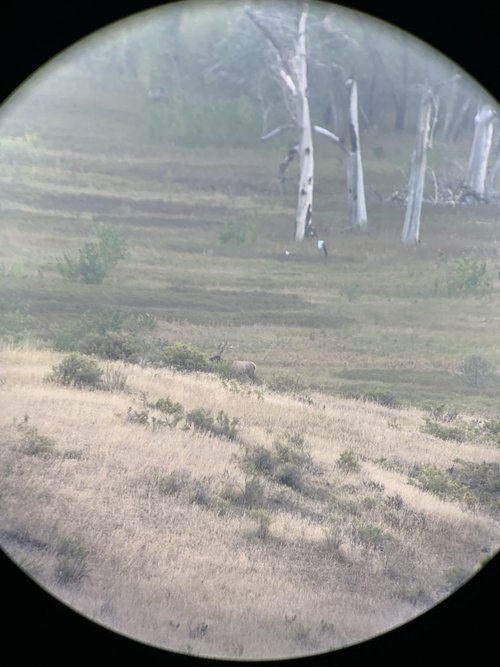
Elkmagnet
Well-known member
Most of the time I can but most important to me I can tell a good bull from a raghorn at 6-10 miles on a good day.Can you see detail that would let you accurately count points on an elk rack at that distance? That's actually what I want, to be able to look at something a mile away and be able to see that kind of detail clearly.
